
Pediatric (We See Kids)
We see families and kids of all ages. We offer a full range of pediatric services and believe that the sooner your child develops a trusting relationship with their forever dentist, the better! We also offer office tours or a get to know you visit for any children that may be anxious or nervous about their first dental visit.
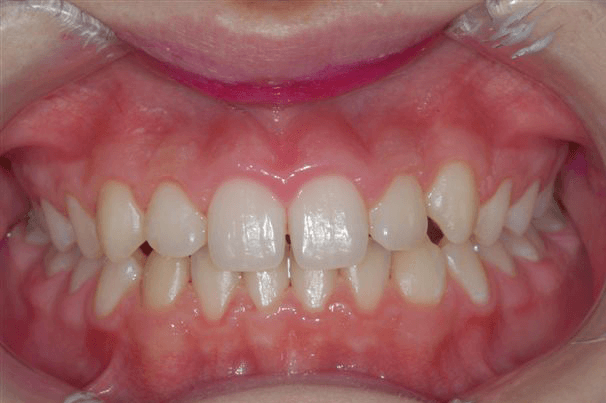
Before flouride treatment
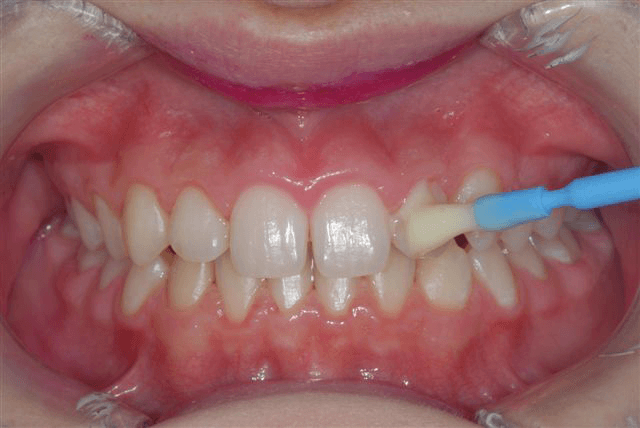
Flouride being applied
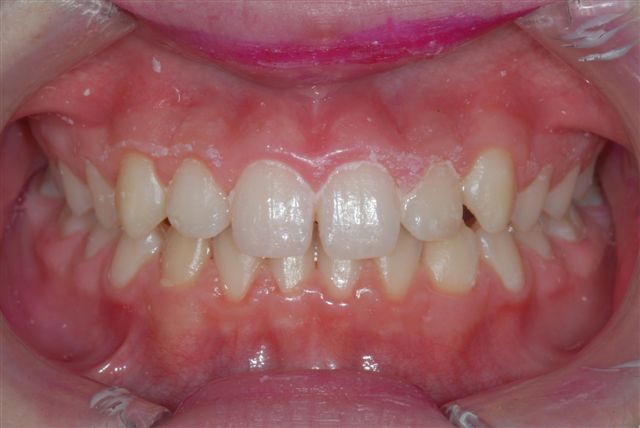
After flouride treatment
What is Fluoride?
Fluoride is a chemical ion of the element fluorine. Fluoride is found naturally in water, foods, soil, and several minerals.
What are the benefits of Fluoride?
Fluoride helps protect teeth from decay and cavities. Teeth with fluoride in the enamel simply resist acids better than teeth that have not been exposed to fluoride. When bacteria in the mouth combine with sugars, acid is produced that can dissolve tooth structure and cause cavities or erode away the enamel. Fluoride
protects teeth from demineralization caused by the acid. It can also help with repairing enamel that has been mildly damaged by acids.
Studies have shown water fluoridation continues to be effective in reducing tooth decay by 20- 40%, even with widespread availability of fluoride from other sources, such as fluoride toothpaste and rinses.
Who should have Fluoride?
Both children and adults can benefit from fluoride use. Fluoride is especially helpful for those with a history of tooth decay, poor dental hygiene, a high acid/sugar diet and those who experience dry mouth.
What are the risks of Fluoride?
As with any medical treatment, toxic effects can occur with extreme doses. Overdose is possible, for example, if a small child consumes an entire tube of toothpaste or ingests multiple fluoride supplement tablets. Fluoride can cause discoloration of enamel if excess amounts are used over long periods of time
while the teeth are developing.
What are the alternatives to Fluoride?
There are no known alternatives to fluoride that provide equal benefit for the health and strength of tooth enamel.
What are the risks of not using Fluoride?
Generally, there is a significantly increased risk of developing cavities.
A dental sealant is a protective coating placed on the chewing surface of the back teeth to protect againstcavities. Permanent back teeth have a significantly higher risk of developing decay as your toothbrush cannot reach the base of the grooves and pits on the biting surface of these teeth to clean them.
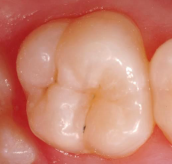
Before sealant placement
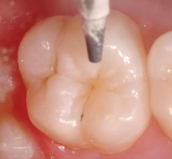
Preparing the teeth for sealants
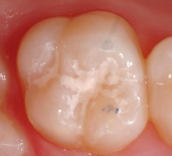
After sealant placement
What are Dental Sealants?
Dental sealants are thin, hard plastic coatings placed in the pits and grooves of teeth. Usually they are needed on the chewing surfaces of the back teeth, but other teeth may also develop pits that need to be protected with sealants.
Who should have Dental Sealants?
Dental sealants are most commonly placed on the permanent molars of children. Ideally, this is done shortly after these teeth fully erupt. The first permanent molars erupt around age six and the second permanent molars erupt around age twelve. Dental Sealants can also protect vulnerable pits or grooves on adults’ teeth.
How do Dental Sealants work?
The pits and grooves on the back teeth may be too narrow for a toothbrush bristle to reach the base of them. This allows plaque and bacteria to accumulate, which increases the risk of tooth decay. Dental sealants fill those pits and grooves, thus decreasing the risk of tooth decay by preventing the accumulation of plaque and bacteria.
How are Dental Sealants placed?
Placing dental sealants requires no anesthetic or drilling. The teeth must be kept isolated during the procedure. The tooth surface is cleaned and prepared then the sealant material is spread into the pits and grooves. The material either sets by itself or is cured with a light. Your dental professional will check to ensure the sealant does not interfere with chewing.
What are the risks of Dental Sealants?
There is very little risk in having dental sealants placed. Rarely, a sealant will leak and decay will form beneath it. Regular examinations by your dentist allow sealants to be repaired or replaced as needed.
What are the risks of not having Dental Sealants placed?
Without dental sealants, the risk of tooth decay increases significantly in teeth with deep grooves and pits. Once a tooth is decayed, it requires a filling and often becomes weaker due to the loss of sound tooth structure.
Patient Feedback
Request An Appointment
Need help? Contact us!





